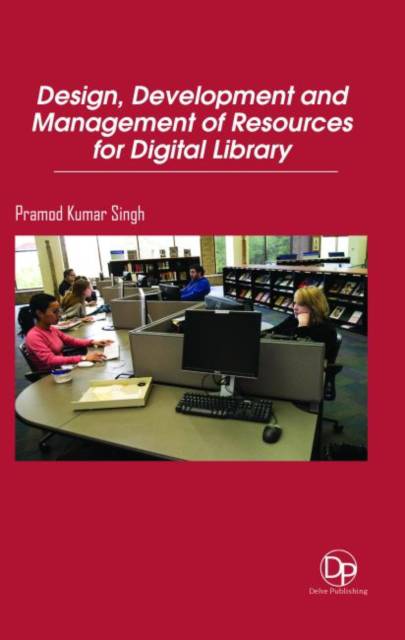
- Retrait gratuit dans votre magasin Club
- 7.000.000 titres dans notre catalogue
- Payer en toute sécurité
- Toujours un magasin près de chez vous
- Retrait gratuit dans votre magasin Club
- 7.000.0000 titres dans notre catalogue
- Payer en toute sécurité
- Toujours un magasin près de chez vous
Design, Development and Management of Resources for Digital Library
Pramod Kumar Singh
Livre relié | Anglais
215,45 €
+ 430 points
Description
In this book, changes in the collection of funds and attendance of libraries under the influence of the growing popularity of electronic resources in comparison with paper libraries are considered. Methods of increasing the efficiency of us¬ing licensed databases, improving electronic catalogs and websites of libraries are discussed. A brief review of metadata formats describing electronic resources and collections, logical structures of electronic publications, as well as standards for data collection and exchange was made. A range of new responsibilities for librarians responsible for electronic resources is described. Changes in the field of library education are considered. Problems of preservation of electronic resources, their influence on schoolchildren, students and in general on libraries are discussed.Over the last ten to fifteen years, a new generation of readers has grown up in Western and northeastern European countries (especially in the US and Rus¬sia), who prefer electronic editions to paper. Accordingly, libraries increasingly redistribute funds in favor of electronic publications to the detriment of paper publications. The American Association of Scientific Libraries, having con-ducted a study among more than 100 of its members, found that over the last decade, the annual average library spending on electronic resources increased by 400% to approximately $ 1.5 million in 2002. At the same time, the total budget for the acquisition of library funds in the same period grew by only 61%. Libraries, as a rule, primarily cancel paper subscriptions to publications in the field of humanities and social and political sciences, and subscriptions to scientific and technical publications are canceled to a lesser extent. The advan¬tages of using electronic publications are well known to librarians, and they are actively replenishing their collections. A large university library today can offer students, faculty and researchers up to 25,000 electronic periodicals in licensed databases and up to 200,000 e-books and more.In addition to paid electronic resources, the easy-to-use Internet search engines (Google, for example) and websites provide serious competition to traditional library collections. Recognizing the fact that more and more readers use the Internet to access information, libraries themselves have actively engaged in the creation of electronic collections by digitizing their own funds and building electronic libraries. Collections of materials for digitization, digitization technologies and methods of building electronic libraries contribute to the birth of new information resources. It significantly increases the effectiveness of education and research allows creating unique collections of previously disparate documents. However, it can also be found in different libraries and archives, including foreign ones can detect unknown collections by combining electronic descriptions of materials on a specific subject from different storages that simply did not know about the existence of the respective collections from each other.The growing popularity of electronic resources and the use of the Internet as an information source has led to a decrease in library attendance and a reduc¬tion in the number of references and bibliographic services. For example, at the University of Idaho, the number of library visitors has decreased by more than 20% since 1997, while the use of articles in electronic form has grown by 350% since 1999. In these conditions, public and university libraries try to at¬tract readers back to their premises, creating comfortable conditions for reading and working with computers, allocating rooms for recreation and meetings, and provide on-site cafeterias. Competing with free search engines and sites on the Internet, many of which contain information of questionable quality, libraries have improved their own electronic catalogs and websites, and provide readers with access to better-paid electronic resources. The same licensed databases al¬low readers to use remotely the Internet using the personal passwords and proxy server of the library.
Spécifications
Parties prenantes
- Auteur(s) :
- Editeur:
Contenu
- Nombre de pages :
- 236
- Langue:
- Anglais
Caractéristiques
- EAN:
- 9781680959390
- Date de parution :
- 01-11-17
- Format:
- Livre relié
- Format numérique:
- Genaaid
- Dimensions :
- 152 mm x 229 mm

Les avis
Nous publions uniquement les avis qui respectent les conditions requises. Consultez nos conditions pour les avis.






